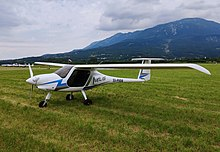Engineers will only develop things that work
The 19th century.. In that period, on Earth, diesel engines were invented. But this invention was feasible and successful, because it depended on a ready available fuel. There exists no fuel on your planet, so engineers would not imagine/design/draw/build any type of engine that uses it. Problem solved, keep optimistic. There is no need for fuel because nothing uses fuel. In short, as a consequence of your world's limitations, a fossil fuel or biomass fuel engine design would never have happened.
Sail powered airships
A wood-fueled manned balloon was invented in the 18th century. Lilienthal flew a glider in 1891, and on your planet, there will be someone attempting the same thing. Humans always want to fly. Your people may accomplish flight. Actual air transport we accomplished in 30-40 years, using motorized aircraft (Wrights brothers, Blériot, DC-3) but without diesel fuel, that would not have happened. No Hindenburgs either... This airship was just a balloon with some diesel engines mounted on it.
Probably, your airships will require sails at first, like this baby,

See also WB topic
How could a sail powered airship work?
Electric flight
Modern insights - after 1870 - have found there are three energy sources for engines, that is fossil fuel, biomass fuel, or.. electricity.
The electromotor could be an option. It will need steel for some of its parts. Steel could be produced manually, or using machines and lots of energy. It needs to be precise. In Sweden, they use machines and energy, but they say they can do it without the fossil fuels,
 https://www.weforum.org/agenda/2021/08/sweden-hybrit-first-fossil-free-steel/
https://www.weforum.org/agenda/2021/08/sweden-hybrit-first-fossil-free-steel/
What if your steampunks would set up some generators ? wind energy, or tidal energy. Harvest Earth heat.. Solar heat collectors.. or let your people discover fission energy and try the nuclear option to generate electricity. There is no science tag, what about cold fusion ?
Based on electricity, an electric motor will be invented. Next step would be to develop light weight batteries.. and off the cliff you go ! With small aircraft, landing won't be an issue. STOL landings require very little space.
 Earth 2020
Earth 2020
Upscaling the electric aircraft to make it an actual means of transport will be an issue to overcome. Nowadays, on Earth, we are about in that stage. We have very agile Pipistrel aircraft: two-seaters. For more passengers or transport, things are in an experimental stage, the electric Cessna Caravan can fly 14 passengers,

https://robbreport.com/motors/aviation/worlds-largest-electric-airplane-takes-flight-2930460/
Be patient.. some time it will happen
We developed electric flight in 120 years or so. Keep in mind developments on your steampunk world, without fuel, could take centuries instead of decades. But they will result in super-lean designs, with energy usage efficiency we can only dream of.




